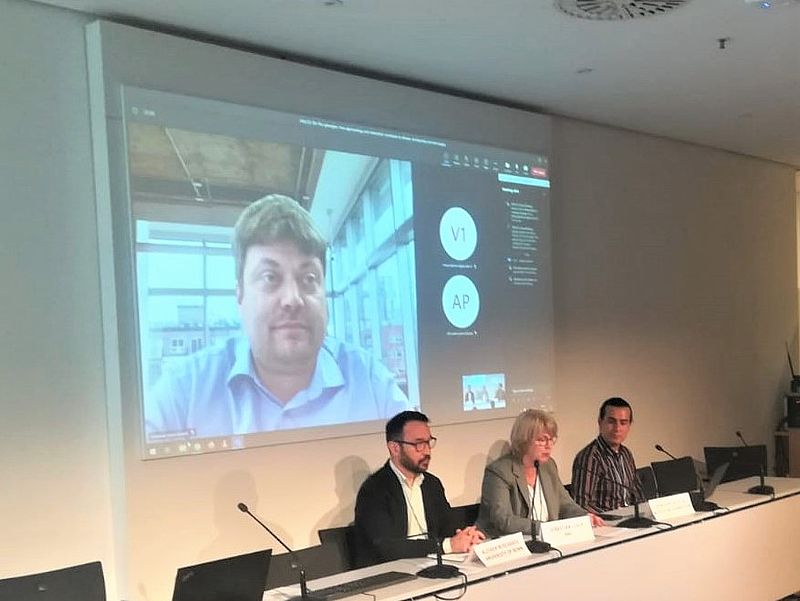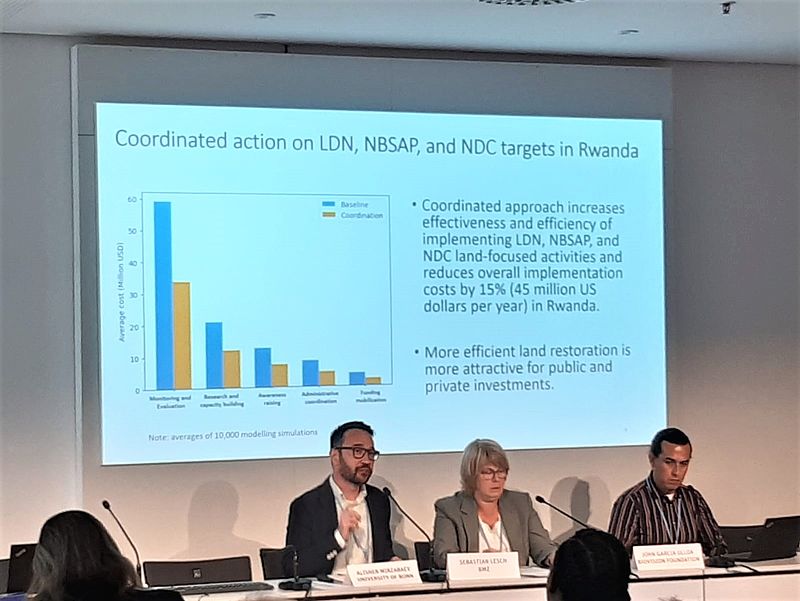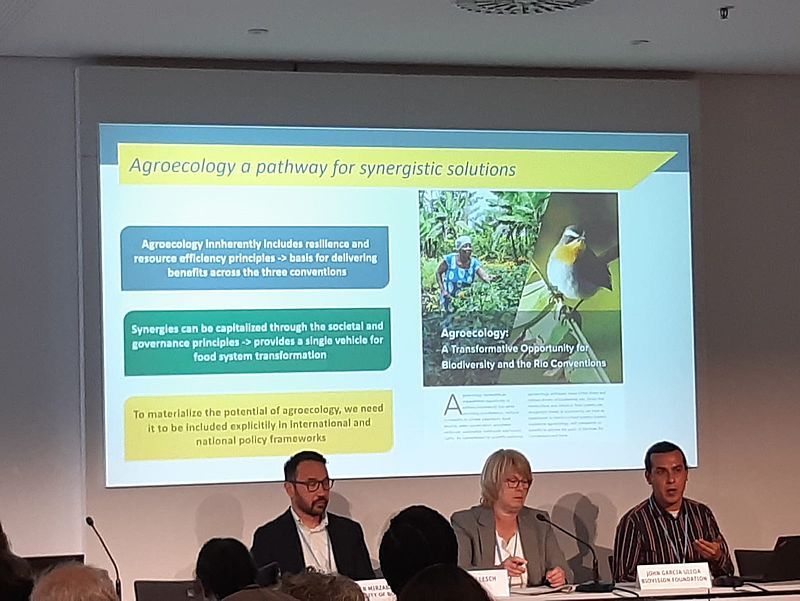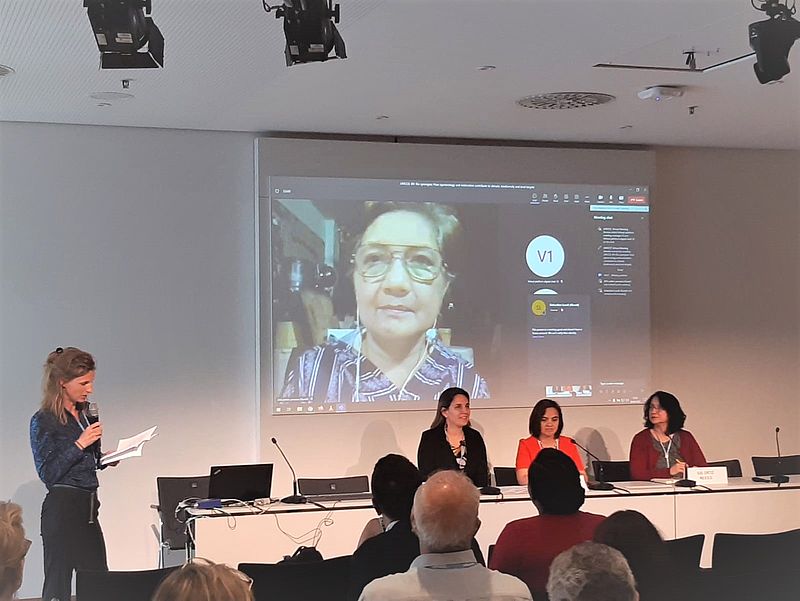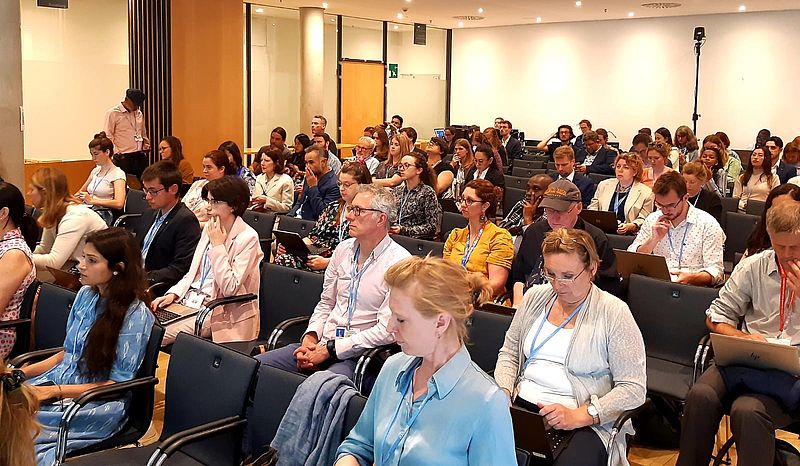A side event at the UNFCCC Bonn Climate Change conference (SB58) – June 6th 2023
Delivering on the climate, biodiversity and land targets of the three Rio Conventions will require integrated approaches that identify and leverage synergies in a coordinated, scaled-up way.
On 6th June 2023, the Secretariat of the United Nations Convention to Combat Desertification (UNCCD), the Biovision Foundation, the Economics of Land Degradation Initiative, WWF and the Agroecology Coalition convened a side event at the Bonn Climate Change Conference to discuss how agroecology, restoration and integrated planning can contribute. The event was moderated by Martina Fleckenstein from WWF International and Sophia Baumert from GIZ.
|
New evidence strengthens the case for integrated implementation
There is a growing pool of evidence around the ecological, social and economic benefits of integrated approaches to land degradation, climate change and biodiversity. The first part of the event showcased recent research and case studies that strengthen the case for synergistic pathways like agroecology and land restoration.
Sebastian Lesch from Germany’s Federal Ministry of Economic Cooperation and Development (BMZ) described in his opening remarks how BMZ-funded projects target and seek synergies between all three Rio Conventions. For example, the Soil Protection and Rehabilitation of Degraded Soil for Food Security (ProSoil) project supports countries in Africa and Asia by promoting integrated soil fertility management and agroecological methods. In the past eight years the project has rehabilitated over 565,000 hectares of agricultural land, impacting 1.7 million beneficiaries. It has increased yields by an average 40% and sequestered 500,000 tonnes of carbon equivalent. Biodiversity has also been strengthened, such as through diversifying crop varieties, replacing the use of synthetic fertiliser and establishing agroforestry practices. He added that Germany is in the process of joining the Agroecology Coalition – a move that will further strengthen the country’s engagement with agroecology at the national and international level.
“If you focus on land restoration and agroecology, you will see a lot of co-benefits across the three Rio Conventions. These are all about integrated approaches” – Sebastian Lesch, BMZ
Alisher Mirzabaev from the University of Bonn and Unique Land Use presented a recent case study conducted in Rwanda with the Economics of Land Degradation Initiative and the Rwandan agriculture ministry. The study provides evidence of the economic benefits of an integrated versus siloed approach to land restoration across the Rio Conventions’ processes in the country. To achieve its 2030 targets, Rwanda’s annual investment needs towards land restoration, conservation, and sustainable land management total around $300 million, he said. Coordinated action increases both the effectiveness and efficiency of implementing agendas for land degradation neutrality (LDN), national biodiversity strategies and action plans (NBSAPs) and nationally determined contributions (NDCs). Efficiency gains from coordinated action – especially on joint monitoring and evaluation, followed by resourcing, capacity building, and awareness raising – could reduce these implementation costs by 15%, or $45 million per year, the study showed. He also flagged that, depending on the location, each dollar invested in land restoration can yield from $2 to $3 of economic returns.
“Land restoration is a multi-faceted solution for land degradation, for climate change, for biodiversity loss, but also for food insecurity and malnutrition” – Alisher Mirzabaev, University of Bonn
John Garcia Ulloa from Biovision argued that agroecological principles – such as resilience, resource efficiency and social equity – directly address many of the issues that are central to the three Rio Conventions. Based on various meta-analyses based on up to 500 studies, he presented evidence that agroecological practices are strongly correlated with positive outcomes for biodiversity, climate change adaptation and combating land degradation. To capitalise on synergies between the three Rio Conventions, a food systems lens – as offered by agroecology – is essential, he added, noting that the United Nations Food Systems Summit in 2021 and Food Days at recent COPs represent positive steps in this direction. But for agroecology’s full potential to be realised, it must be included in international and national policy frameworks, including NBSAPs, NDCs, national LDN targets and Sustainable Development Goal (SDG) strategies and action plans, he concluded. To support this, a recent brief by Biovision highlights key messages to guide policymakers as they develop national action plans and sustainability targets, with a specific focus on NBSAPs.
“Agroecology is a pathway for synergistic solutions. But to able to materialise the full potential of agroecology we need it to be included in international and national policy frameworks” – John Garcia Ulloa, Biovision
The way ahead: action points for implementing synergies
A panel discussion then focused on how the evidence presented so far could support the implementation at scale of an integrated response to the Rio Conventions. Speakers shared their experience of how this looks in practice and recommended next steps.
Miriam Medel from UNCCD said she was optimistic at signs of growing political momentum, with more member states taking a whole-of-government, whole-of-society approach towards tackling Rio Convention challenges. She flagged examples of progress, include UNCCD hosting the first Food Day at a Rio Conventions conference, followed by three Food Systems Pavilions at COP 27, and a Rio Conventions Pavilion with multiple food systems conversations at the Convention on Biological Diversity (CBD) COP. Other milestones include a movement into the policy and advocacy area. For example, she noted that a policy brief presented by Biovision contains practical recommendations for policy makers, while UNCCD has also produced a Land Restoration to Safeguard Nature and Livelihoods brief that focuses on synergies between UNCCD and CBD’s Global Biodiversity Framework. However, it is not the Rio Conventions that need to seek synergies with each other, she stressed. Rather, it is a job for individual member states to find ways to implement them in an integrated way. She also called for the creation and packaging of more data – including around which social groups benefit from approaches such as agroecology – for presentation to policy makers.
“Who is benefiting from this? We often at the UNCCD would think this is a convention about land, but in reality it’s a convention about people. We really need to be working on changing that narrative and on providing the evidence to policy makers so they can make the changes” – Miriam Medel, UNCCD
Sol Ortiz Garcia from Mexico’s Ministry of Agriculture, and UNFCCC negotiator for the country, argued that soil’s role within ecosystem functions – such as filtering and conserving water, capturing carbon, and enabling the nutrient cycle – makes it a key integrating resource for implementing a joint approach to the Rio Conventions and SDGs. She described how her government already takes a systemic approach, with public policies designed to both comply with all three Rio Conventions and contribute to the SDGs. The country’s Sectorial Programme policy has three main pillars – productivity, sustainability and inclusion – while a General Law on Climate Change mandates that different ministries work together. Examples of collaboration include the National Strategy for the Conservation and Sustainable Use of Pollinators, which views sustainable pollination as an important ecosystem service within the context of climate change and was jointly created by the Agriculture and Environment ministries, she noted. A new project on mainstreaming biodiversity in agroecosystems and forestry, for which Mexico has secured Global Environment Facility (GEF) funding, will also be implemented according to this systemic approach.
“Within a programme that we have on climate in agriculture, we identified the actions of these instruments that contribute to adaptation, the actions that contribute to mitigation, and the actions that are synergistic. So we have this systemic approach” – Sol Ortiz Garcia, Ministry of Agriculture, Mexico
Esther Penunia from the Asian Farmers’ Association (AFA) and Agroecology Coalition argued that transitioning from conventional to agroecological production is critical to achieve climate, biodiversity and land targets, and described how shifting to diversified, agroecological farming methods has also improved the yield and income of small-scale AFA members. She called for increased political engagement and commitment to agroecological transformation, with an emphasis on inclusion – of family farmers, indigenous people and local communities. To achieve scaled-up implementation, agroecology should be embedded in national development and food system transformation plans, with the collaboration of multiple ministries, including Finance and Planning, she argued. Proponents should also push for increased investment in agroforestry, sustainable fisheries, sustainable pastoralism and integrated, diversified organic farming systems across all landscapes. Thirdly, the co-creation and exchange of knowledge and experience around agroecology, biodiversity, conservation and sustainability are essential, she argued.
“Local context matters. Agroecology is site specific, because it factors in not only local biophysical, ecological conditions, but also local social cultural context” – Esther Penunia, AFA and Agroecology Coalition
Kelly Witkowski from the Inter-American Institute for Cooperation on Agriculture, proposed several actions to enable a more synergistic implementation of the Rio Conventions. First, the international community should coordinate more impactful and efficient use of public- and private-sector investment, she argued. As seen in Rwanda, existing public policy instruments and tools should be analysed to ensure they are aligned and coordinated. Better use should also be made of existing platforms for coordination, both horizontally and vertically, and monitoring and evaluation systems should be more integrated. And while agricultural ministries are not necessarily the focal points for each Convention, institutional innovation is required to ensure the sector largely responsible for rural land use and livelihoods takes more ownership of the work, she argued. Farmers should also be supported with better risk transfer mechanisms and market incentives for agroecological produce, she argued.
“We need to create greater ownership in the sector that’s responsible for a large part of land use in rural areas that so many livelihoods depend on. And I think to do this, we need greater institutional innovation” – Kelly Witkowski, IICA
Closing remarks
Dirk Nemitz from the United Nations Framework Convention on Climate Change (UNFCCC) concluded by sharing some takeaways from the event. He acknowledged a human tendency to compartmentalise and tackle challenges separately but said an integrated approach to land management is needed that is also tailored to each piece of land, taking into account communities, land-use traditions and existing policies. He argued that collaborative analysis of how individual forests, grasslands or other ecosystems could be managed in a way that plays into each Convention would reveal integrated implementation approaches that would create synergies, avoid duplication and achieve more with the same resources. He stressed the importance of leaving soil uncovered in preventing land degradation, preserving biodiversity and both mitigating and adapting to climate change, and agreed that innovation towards an integrated approach to the three Conventions must occur at the national level.
“What we need to do is sit together and consider what it takes to manage a forest, a grassland or any other ecosystem, specifically to gain benefits for all the three Conventions. This will reveal approaches for implementation of action, to address our challenges in a way that creates synergies and avoids duplication” – Dirk Nemitz, UNFCCC
► Learn more:

